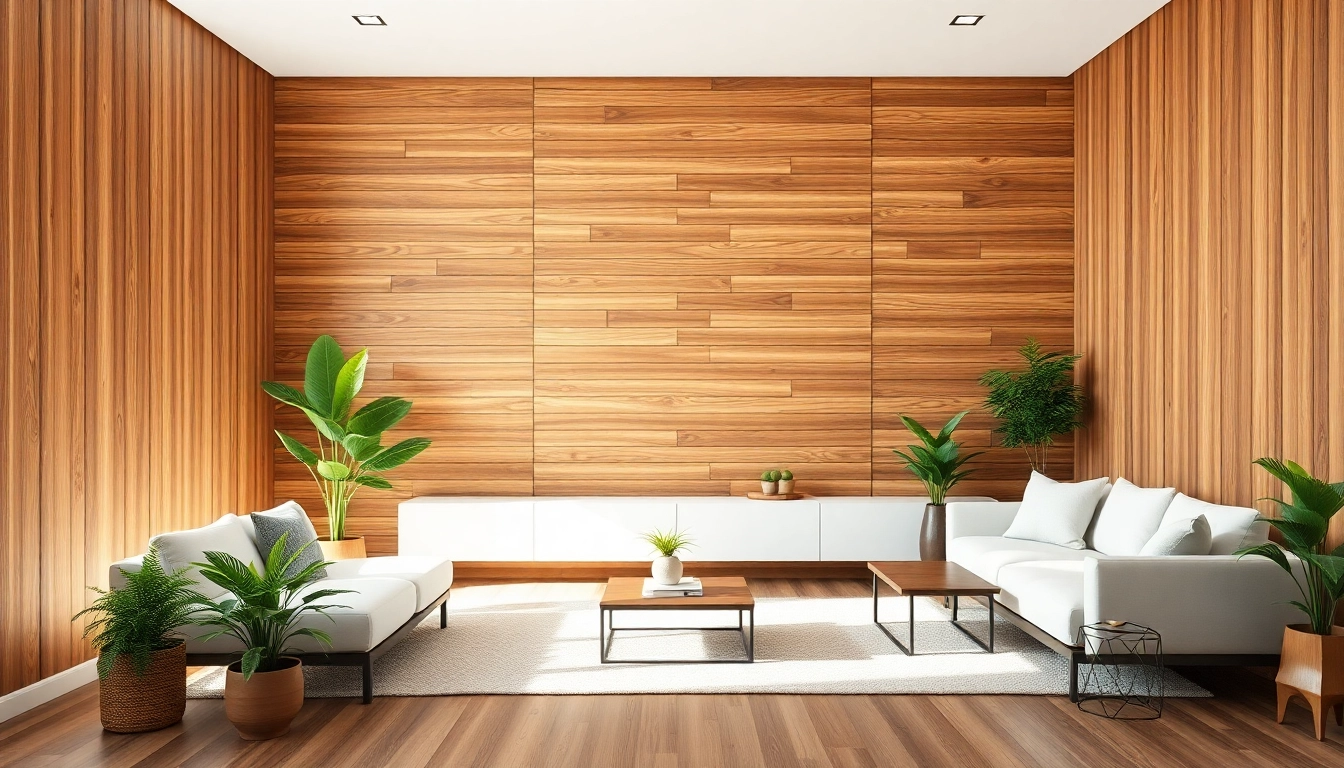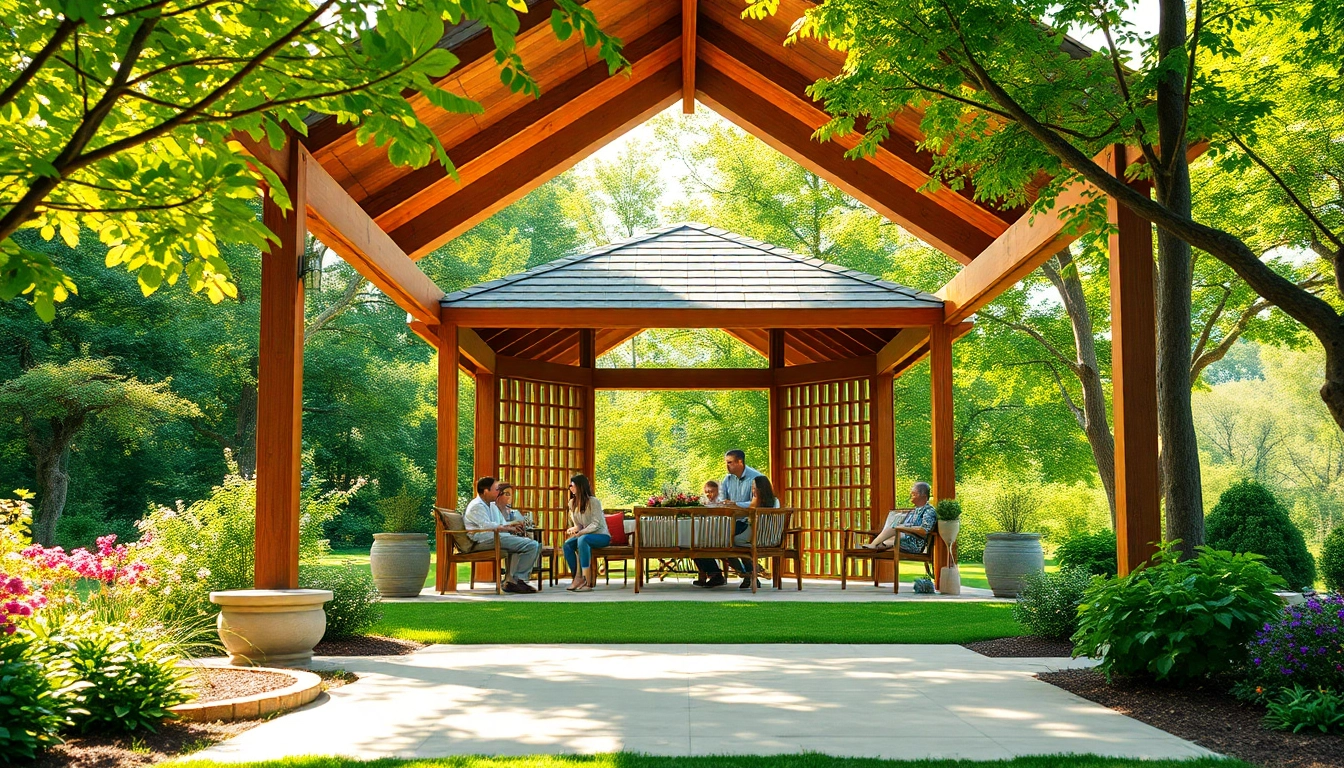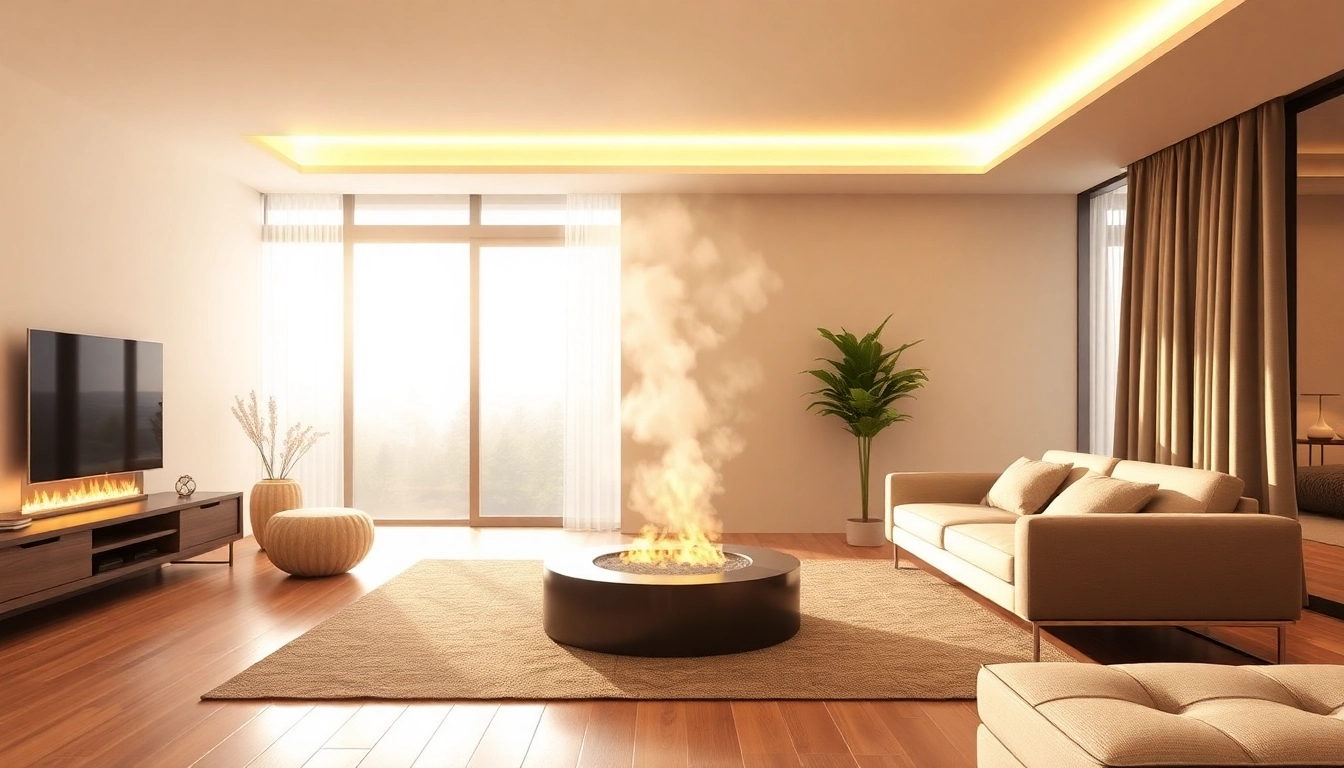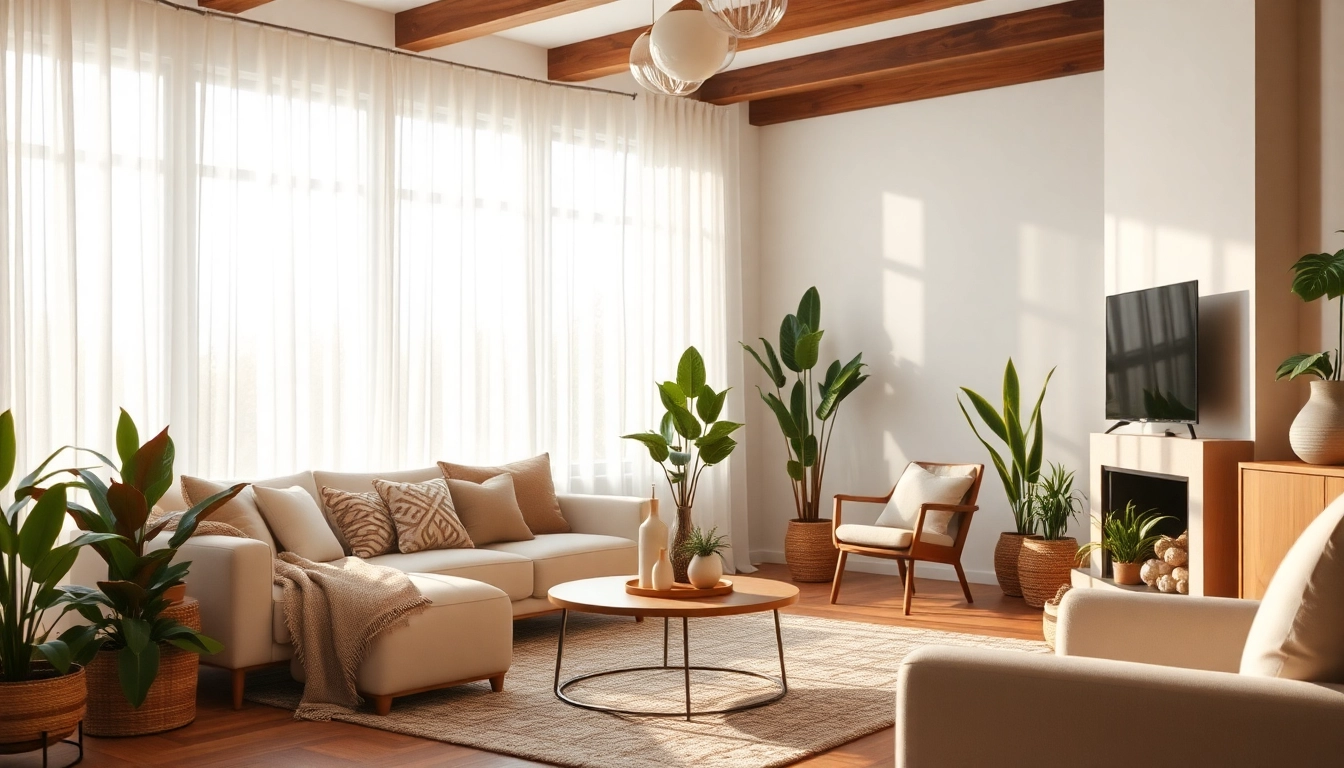Introduction to Wood Covering
When it comes to interior design, the materials you choose to cover your walls can dramatically influence the ambiance and style of your space. Among the myriad options available, wood covering has emerged as a favored choice for many homeowners and designers alike. This timeless material not only adds warmth and texture to any room but also offers versatility in design that can suit a wide variety of tastes and preferences. In this comprehensive guide, we will explore the intricacies of wood covering, its benefits, types, features, and more, ensuring that you have all the information needed to make informed decisions.
Understanding the Benefits of Wood Covering
Wood covering brings with it an impressive array of benefits that extend beyond mere aesthetics. Its natural beauty can complement various architectural styles, from rustic to modern. Here are some of the key benefits of incorporating wood covering into your spaces:
- Insulation: Wood has insulating properties that help maintain temperature, making interiors warmer in winter and cooler in summer.
- Acoustic Absorption: Wood can significantly improve sound quality by absorbing sound waves, reducing noise pollution in living and working environments.
- Eco-Friendly Options: Many wood coverings are sourced from sustainable forests, and there are numerous reclaimed wood options that reduce waste and promote environmental consciousness.
- Durability: When properly maintained, wood covering can last for decades, providing long-term value.
- Style Versatility: Available in a wide range of colors, grain patterns, and finishes, wood covering can adapt to virtually any design theme.
Types of Wood Covering Available
The variety of wood covering options ensures that there is a perfect fit for everyone’s design needs. Understanding the different types can inform your selection process:
- Wood Panels: These include standard flat panels and textured options that can enhance visual interest.
- Slat Panels: Ideal for a contemporary feel, these panels are often used to create a striking visual effect in a space.
- Shiplap: A classic design choice, shiplap can be applied both horizontally and vertically, lending a cozy, cottage-like appearance.
- Plywood: Economical and lightweight, plywood options can provide a modern, industrial look to interiors.
- Reclaimed Wood: Sourcing wood from old barns or other buildings offers unique character and supports eco-friendly practices.
Key Features of Wood Covering Panels
Choosing wood covering panels requires an understanding of their key features, which can affect both functionality and aesthetics:
- Finish: The finish can range from natural oils to varnishes, each providing different levels of sheen and protection.
- Thickness: Different thicknesses may provide varying levels of sound absorption and insulation capabilities.
- Grain Patterns: The grain of the wood can significantly influence the overall look, with options varying from fine textures to more pronounced knots and swirls.
- Moisture Resistance: Some wood coverings are treated to resist moisture, making them suitable for humid environments such as kitchens and bathrooms.
Choosing the Right Wood Covering for Your Needs
Selecting the right wood covering is not a task to be taken lightly, as it will have a lasting impact on your space. Here are some factors to consider:
Factors to Consider When Selecting Wood Covering
Assessing your needs involves several considerations:
- Space Functionality: Different areas of your home serve different purposes. Consider how much wear and tear your covering will endure; for high-traffic areas, a more durable finish may be necessary.
- Style Preferences: Your personal aesthetic will guide your choice. Whether you prefer a warm rustic look or a sleek modern finish, there are options available for every taste.
- Budget: Wood covering can vary drastically in price. Set a budget that encompasses not just the material but also potential installation costs.
- Installation Method: Decide whether you want a DIY project or professional installation. Some wood coverings require specialized tools and skills.
How to Match Wood Covering with Your Decor
Integrating wood covering into your existing decor is key to achieving a cohesive look:
- Complementary Colors: Ensure that the wood tones complement the existing colors in your space. Consider pairing lighter woods with bold colors and darker options with neutral palettes.
- Texture Balance: If your space features sleek materials like glass or metal, consider using a warm wood covering to soften the overall look.
- Consistent Style: For a seamless transition between rooms, match the style of the wood covering with other elements in your home, including furniture and cabinetry.
Common Mistakes to Avoid When Buying Wood Covering
To ensure a successful purchase, avoid these pitfalls:
- Neglecting Acclimatization: Wood can expand and contract with humidity. Failing to allow your wood covering to acclimatize to the environment can lead to warping.
- Ignoring Manufacturers’ Recommendations: Not adhering to recommended installation methods can compromise the quality and durability of the wood covering.
- Overlooking Maintenance Requirements: Some wood finishes require specific upkeep. Be sure to understand what maintenance will be necessary before making a selection.
Installation of Wood Covering
Once you’ve selected your wood covering, the next step is its installation. Here are the essential details:
Tools and Materials Required for Installation
Having the right tools and materials can make your installation process more efficient:
- Measuring Tape: To ensure precise measurements of your space.
- Level: For ensuring that each panel is installed straight.
- Stud Finder: Essential for locating wall studs to support the wood panels.
- Power Tools: Including a saw, drill, and nail gun or hammer, depending on the installation method you choose.
- Adhesive and Fasteners: Specific types of wood adhesives and finish nails that fit your panels.
Step-by-Step Guide to Installing Wood Covering
Here’s a quick guide to help you through the installation process:
- Prepare the Wall: Clean and repair the wall surface as necessary.
- Measure and Mark: Use a level to mark where each panel will go, taking care to measure accurately.
- Cut Panels to Size: Cut your wood panels to fit as needed, particularly around windows or outlets.
- Install Panels: Use adhesives, nails, or a combination to secure the panels to the wall.
- Finish Edges: Apply trim or molding to cover any seams for a polished look.
- Allow for Curing: If using glue, allow adequate time for it to cure before putting any weight on the panels.
Troubleshooting Common Installation Issues
If you encounter problems during installation, here are solutions to common issues:
- Uneven Surface: If the wall is not even, consider using spacers or leveling strips to create a flat plane.
- Panel Gaps: This may occur if the wood has not acclimatized. Allowing the wood to adjust to room conditions prior to installation can help mitigate this issue.
- Nails Not Securing Properly: Check for interference from drywall or studs. Adjust the placement of nails as necessary.
Caring for Your Wood Covering
To keep your wood covering looking its best, regular care and maintenance are crucial:
Maintenance Tips for Wood Covering
Here are several effective maintenance tips:
- Regular Dusting: Use a soft, dry cloth to dust your wood covering frequently, preventing dirt build-up.
- Humidity Control: Maintain a stable moisture level in your home to prevent cracks and warping.
- Prompt Repairs: Address any damage immediately to prevent further deterioration.
Cleaning and Upkeep Recommendations
Cleaning your wood covering should be done with care:
- Gentle Cleaners: Use a mild soap solution or specialized wood cleaner for the best results.
- Avoid Excess Water: Do not soak wood panels, as this can lead to damage.
- Conditioning: Depending on the finish, conditioning products may be required to maintain beauty and longevity.
How to Extend the Life of Your Wood Covering
Maximize the lifespan of your wood covering by following these methods:
- Use Protective Accessories: Consider area rugs and furniture pads to prevent scratching and wear.
- Limit Direct Sunlight Exposure: Use curtains or blinds to protect your wood covering from UV damage, which can fade color.
- Regular Inspections: Schedule routine checks of your wood covering to identify and address issues early.
Wood Covering Trends and Innovations
As design preferences evolve, wood covering trends continue to shift. Stay ahead of the curve with the latest advancements:
Emerging Styles in Wood Covering Design
Today’s wood covering embraces novel designs:
- Mixing Materials: Combining wood with metal, glass, or stone can create unique visual dynamics in a space.
- Textured Finishes: Textures like wire-brushed or sandblasted wood create depth and interest.
- Wall Art Installations: Using wood panels as art pieces is gaining popularity, offering a creative twist to traditional placements.
Technological Advances in Wood Covering Materials
Technology has redefined wood covering options, enhancing performance and aesthetics:
- Engineered Wood Products: These offer improved strength and stability compared to traditional solid wood.
- Sustainable Production Methods: Advanced techniques are minimizing waste and promoting eco-friendly sourcing.
- Smart Wood Technologies: Emerging applications of technology support climate control and air purification in enclosed spaces.
Integrating Sustainability into Your Wood Covering Choices
Awareness of sustainability is informing many design choices:
- Sourcing Reclaimed Wood: Utilizing salvaged wood reduces waste and enhances environmental responsibility.
- Certifications: Look for certifications like FSC (Forest Stewardship Council) ensuring sustainable practices.
- Low VOC Options: Opt for finishes that emit low volatile organic compounds for healthier indoor air quality.



